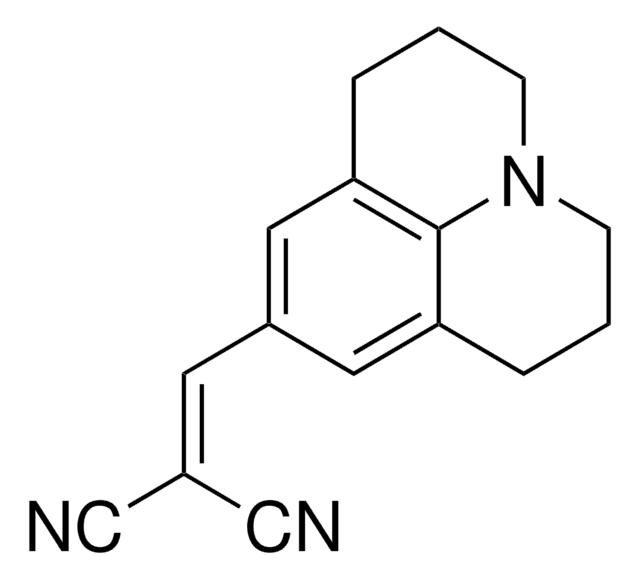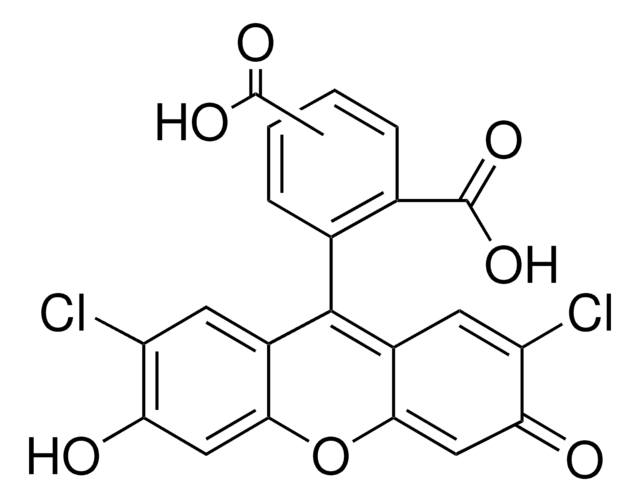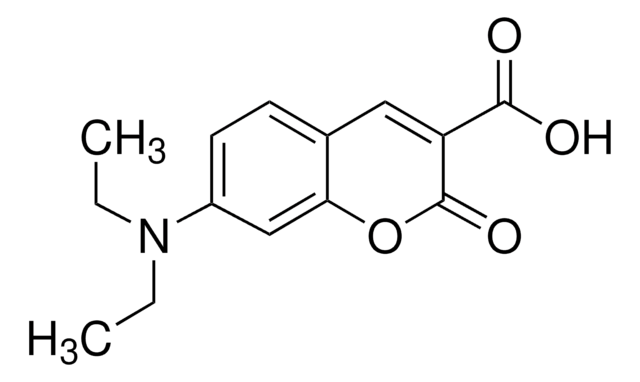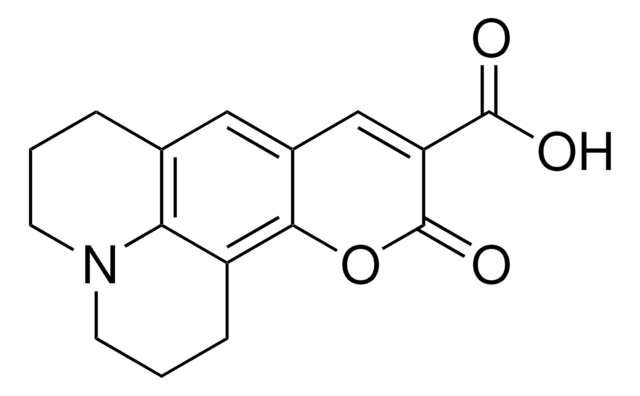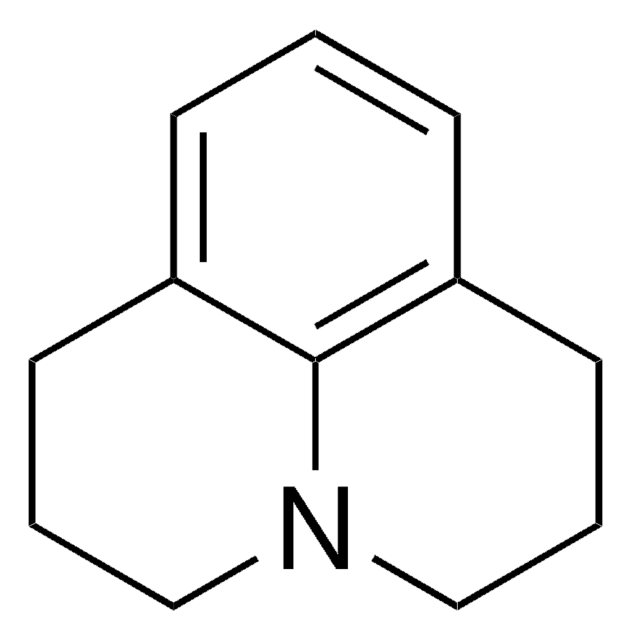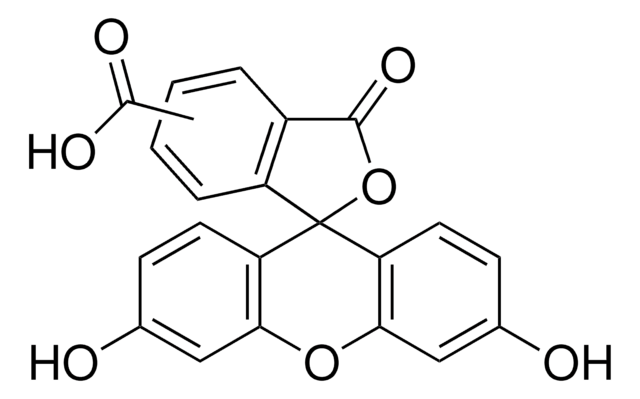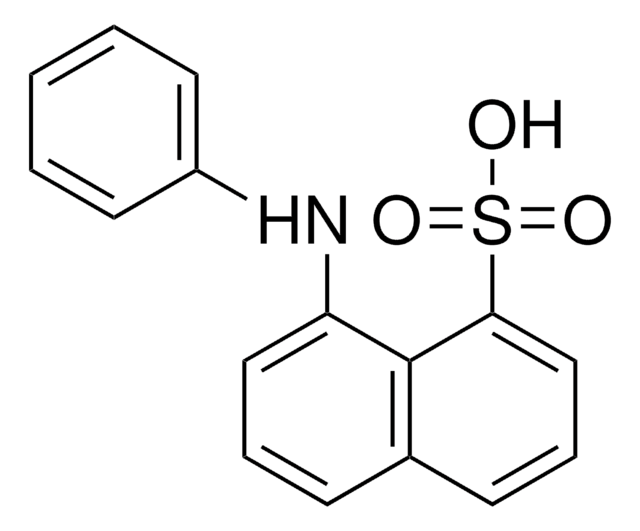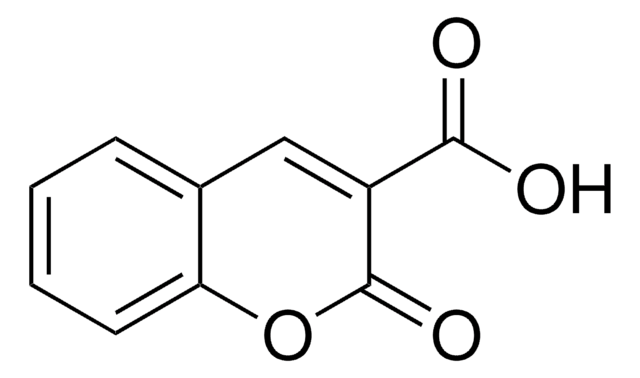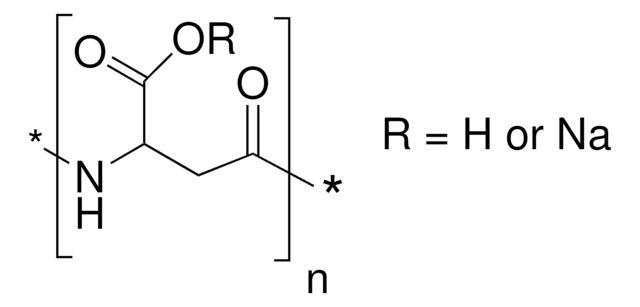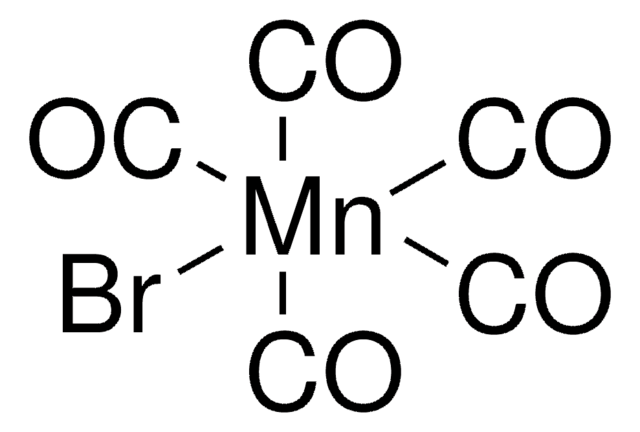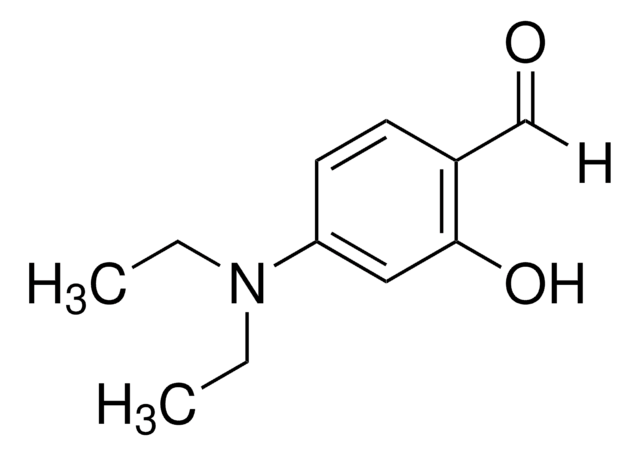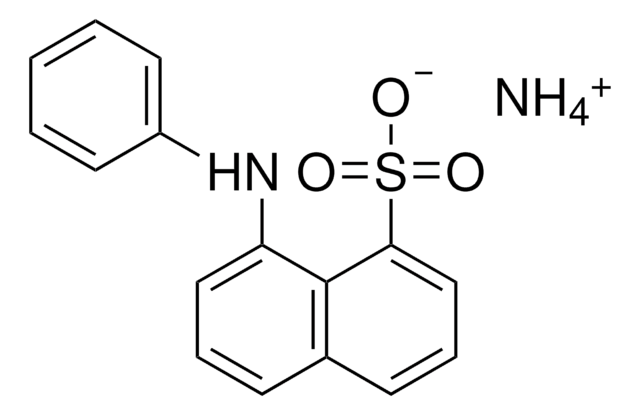推荐产品
產品線
BioReagent
品質等級
化驗
≥97.0% (HPLC)
形狀
solid
溶解度
DMSO: soluble
chloroform: soluble
螢光
λex 433 nm; λem 500 nm in 50 mM Tris pH 8.0; 40% glycerol
適合性
suitable for fluorescence
SMILES 字串
OC(=O)\C(=C\c1cc2CCCN3CCCc(c1)c23)C#N
InChI
1S/C16H16N2O2/c17-10-14(16(19)20)9-11-7-12-3-1-5-18-6-2-4-13(8-11)15(12)18/h7-9H,1-6H2,(H,19,20)/b14-9+
InChI 密鑰
JXENNHTVELFRHV-NTEUORMPSA-N
正在寻找类似产品? 访问 产品对比指南
應用
Fluorescent probe for binding to proteins etc., quantum yield increases by decreasing free rotation: fluorescent molecular rotor.
包裝
Bottomless glass bottle. Contents are inside inserted fused cone.
儲存類別代碼
11 - Combustible Solids
水污染物質分類(WGK)
WGK 3
閃點(°F)
Not applicable
閃點(°C)
Not applicable
個人防護裝備
dust mask type N95 (US), Eyeshields, Gloves
其他客户在看
Elisabeth Ablinger et al.
International journal of pharmaceutics, 441(1-2), 255-260 (2012-12-04)
A differential scanning fluorimetry (DSF) based high-throughput screening assay with the fluorescent molecular rotor CCVJ (9-(2-carboxy-2-cyanovinyl)julolidine) was developed. CCVJ is mainly sensitive to viscosity and less to polarity in comparison to polarity-sensitive dyes like SYPRO Orange, which was commonly used
Christopher Rumble et al.
The journal of physical chemistry. A, 116(44), 10786-10792 (2012-10-27)
The photochemistry of the rotor probe 9-(2-carboxy-2-cyanovinyl)julolidine (CCVJ) was studied to elucidate a curious effect of fluid flow previously reported. The apparent sensitivity to fluid motion observed in CCVJ but not in the closely related molecule 9-(dicyanovinyl)julolidine (DCVJ) is found
Xingyun Peng et al.
Carbohydrate polymers, 250, 116859-116859 (2020-10-15)
Fluorescence emissions of molecular rotors (MRs) are affected by local restrictions to molecular motion, and therefore it was considered that MRs can be used as structural probes of biopolymers. In this study, 9-(2-carboxy-2-cyanovinyl)-julolidine (CCVJ), a hydrophilic MR, was used to
James A Levitt et al.
Chemphyschem : a European journal of chemical physics and physical chemistry, 12(3), 662-672 (2011-02-18)
We present polarization-resolved fluorescence measurements of fluorescent molecular rotors 9-(2-carboxy-2-cyanovinyl)julolidine (CCVJ), 9-(2,2-dicyanovinyl)julolidine (DCVJ), and a meso-substituted boron dipyrromethene (BODIPY-C(12)). The photophysical properties of these molecules are highly dependent on the viscosity of the surrounding solvent. The relationship between their quantum
Sagar Satpathi et al.
Organic & biomolecular chemistry, 17(21), 5392-5399 (2019-05-21)
Here, we have explored the light-up property of coumarin 343 (C343) selectively towards various i-motif DNAs based on the recognition of hemi-protonated cytosine-cytosine base pairing, unlike other DNA structures. We have also demonstrated the versatile ability of this i-motif ligand
我们的科学家团队拥有各种研究领域经验,包括生命科学、材料科学、化学合成、色谱、分析及许多其他领域.
联系技术服务部门